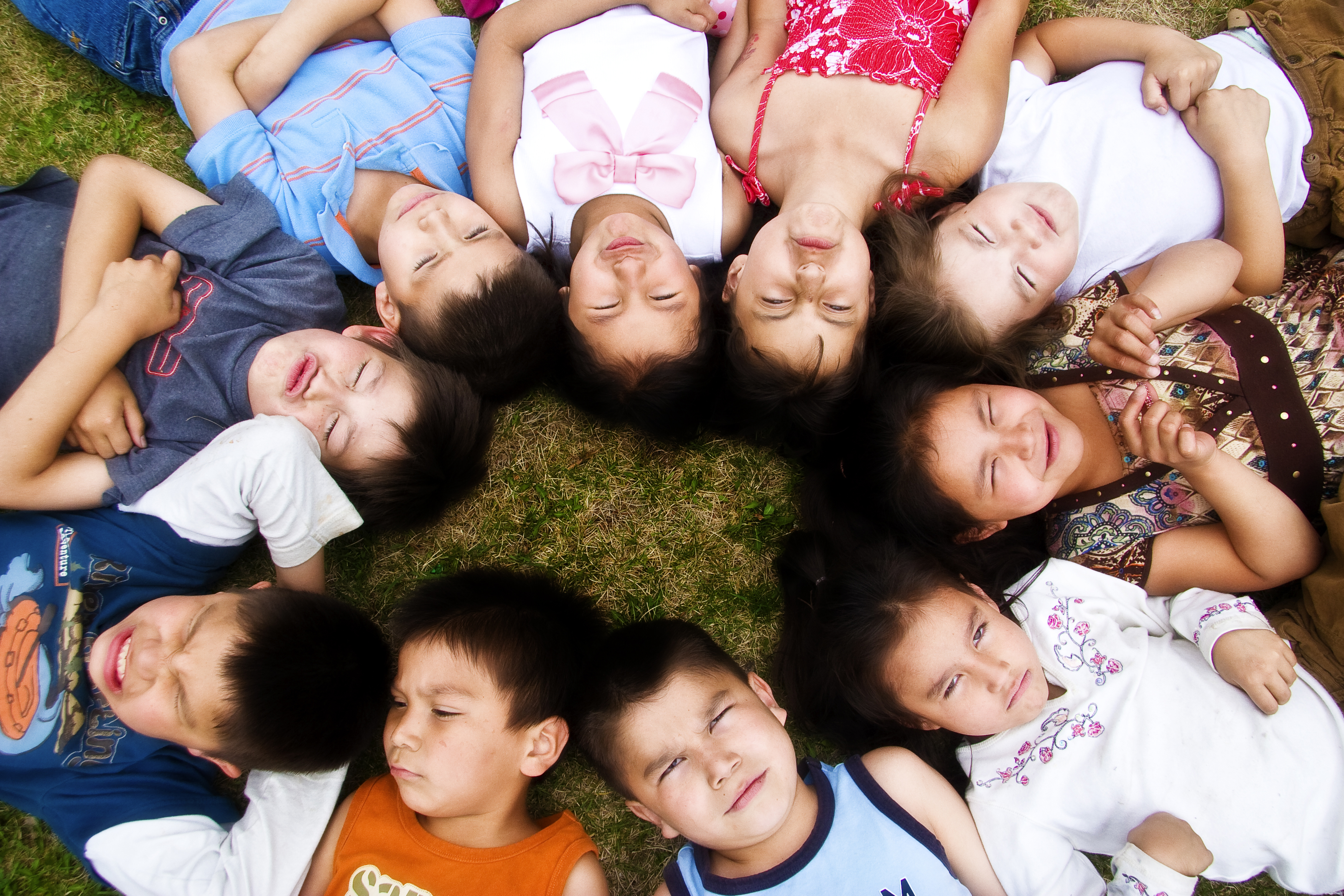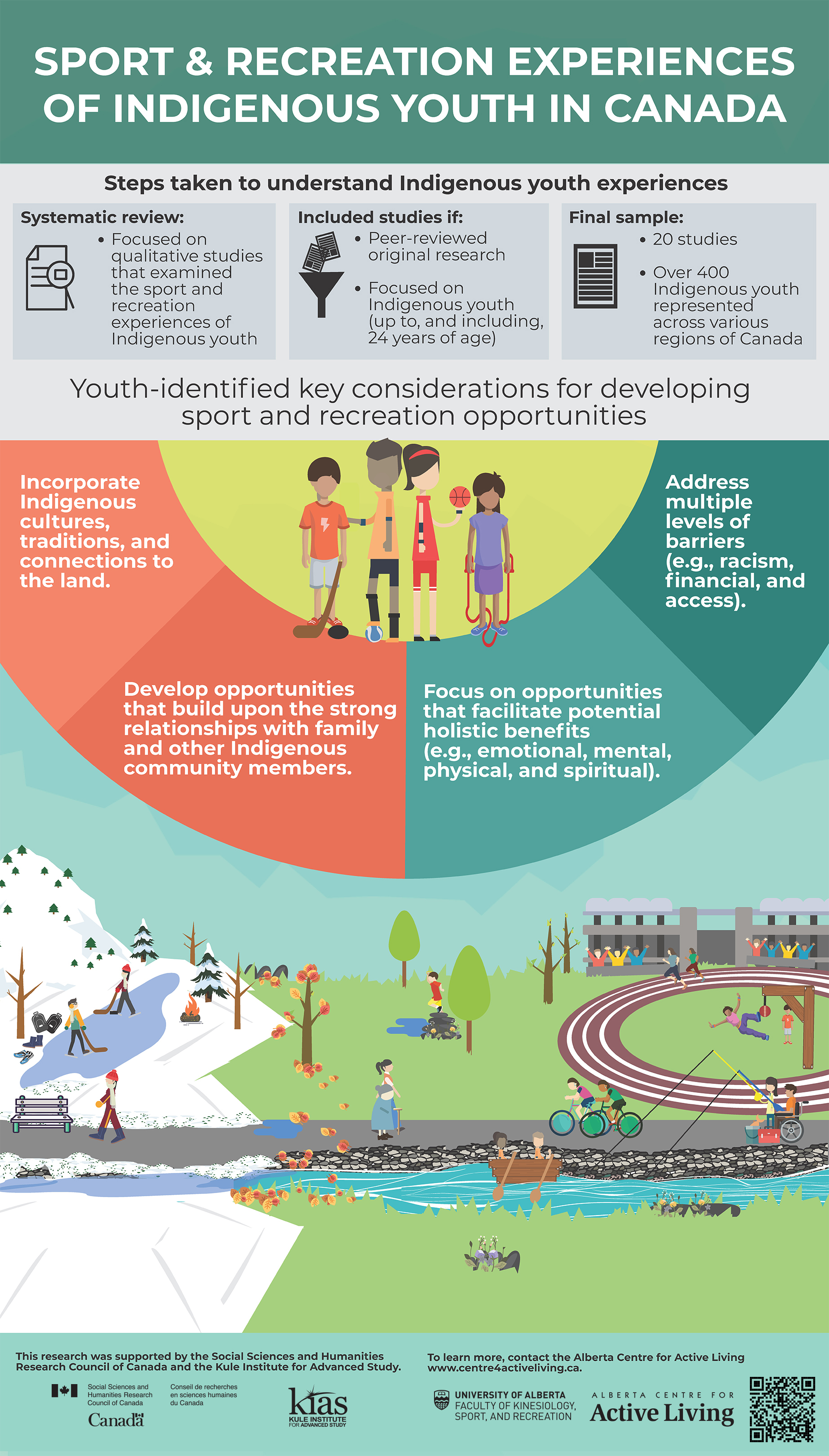
Incorporating Indigenous cultures, traditions and connections to the land is one of four key recommendations policy makers and program planners should consider when developing sport and recreation opportunities for Indigenous youth, according to a recent UAlberta study.
Led by associate professor Tara-Leigh McHugh, a recent systematic review of 20 Canadian-based sport and recreation studies have resulted in four key considerations that are embedded in the voices of over 400 Indigenous youth.
"Our main criteria when we started the review were that we wanted qualitative research that was grounded in the voices of Indigenous youth," says McHugh, a researcher in the Faculty of Kinesiology, Sport, and Recreation. "It's one thing for us (researchers) to tell you the benefits of sport and recreation, but when you actually hear from Indigenous youth either their positive or negative experiences with sport and recreation, it really drives the research home."
From the analysis of the data-which saw McHugh and her team screen more than 400 studies before narrowing it down to the 20 used to pull the data-the following youth-led considerations were identified:
- Incorporate Indigenous cultures, traditions and connections to the land
Participants in one of the 20 studies described how they were able to connect to activities that are more cultural and traditional, with one young woman stating access to traditional dances, practices, teaching and ceremonies help her feel more spiritual. In another study, a young man stated that "sport means being outside', which echoed the voices of many youth their desire to connect with the land during these activities.
- Develop opportunities that build upon the strong relationships with family and other Indigenous community members
McHugh notes a constant theme throughout the testimonials was that Indigenous youth described how relationships with family or community members made their sport and recreation experiences more enjoyable.
"When asked why their relationships with their family and community members were so important, one individual described that his father is very important to his sport and recreations experiences by saying 'He takes the time and money to put me into sports because he likes to keep me active."
McHugh adds that Indigenous youth also described how sport and recreation opportunities can-and often are-used to promote and enhance family and community relationships.
- Focus on opportunities that facilitate potential holistic benefits
Many of the youth quoted in McHugh's paper articulated a deep understanding of the potential emotional, physical, mental and spiritual benefits of sport and recreation. The communication and teamwork that is learned through sport was described by youth as mentally beneficial, and words like "fun" and "happy" were commonly used when asked about the emotional benefits of these activities. Traditional activities like powwows were expressed by the youth as both spiritually and physically beneficial.
- Address multiple levels of barriers
Despite the many potential benefits of sport and recreation, many of the youth in the studies noted various barriers that negatively impact their experiences, most notably racism, financial constraints and access to facilities, spaces and programs. According to the research, youth explained the social challenges of pursuing sport where they are the only Indigenous youth participating in programs, which, in some cases, saw them experience various levels of direct racism.
According to McHugh, the key considerations can play a vital role on sport and recreation policy and program planning.
"There seems to be an increased interest to ensure our programs in Canada are inclusive and welcoming for Indigenous youth. If policy makers and programmers take a closer look at the research supporting the considerations, they will see that these four points can be the first step in creating that inclusive, safe environment and, in turn, create a fulfilling and meaningful experience for Indigenous youth."
Working with the Alberta Centre for Active Living, McHugh has created an infographic that they have been sharing with interested groups working with Indigenous youth. The paper is currently published online in Qualitative Health Research. The paper includes references to the 20 previous studies that informed the recommendations, so those interested can get a more in-depth look into the data, namely the youth testimonials.
